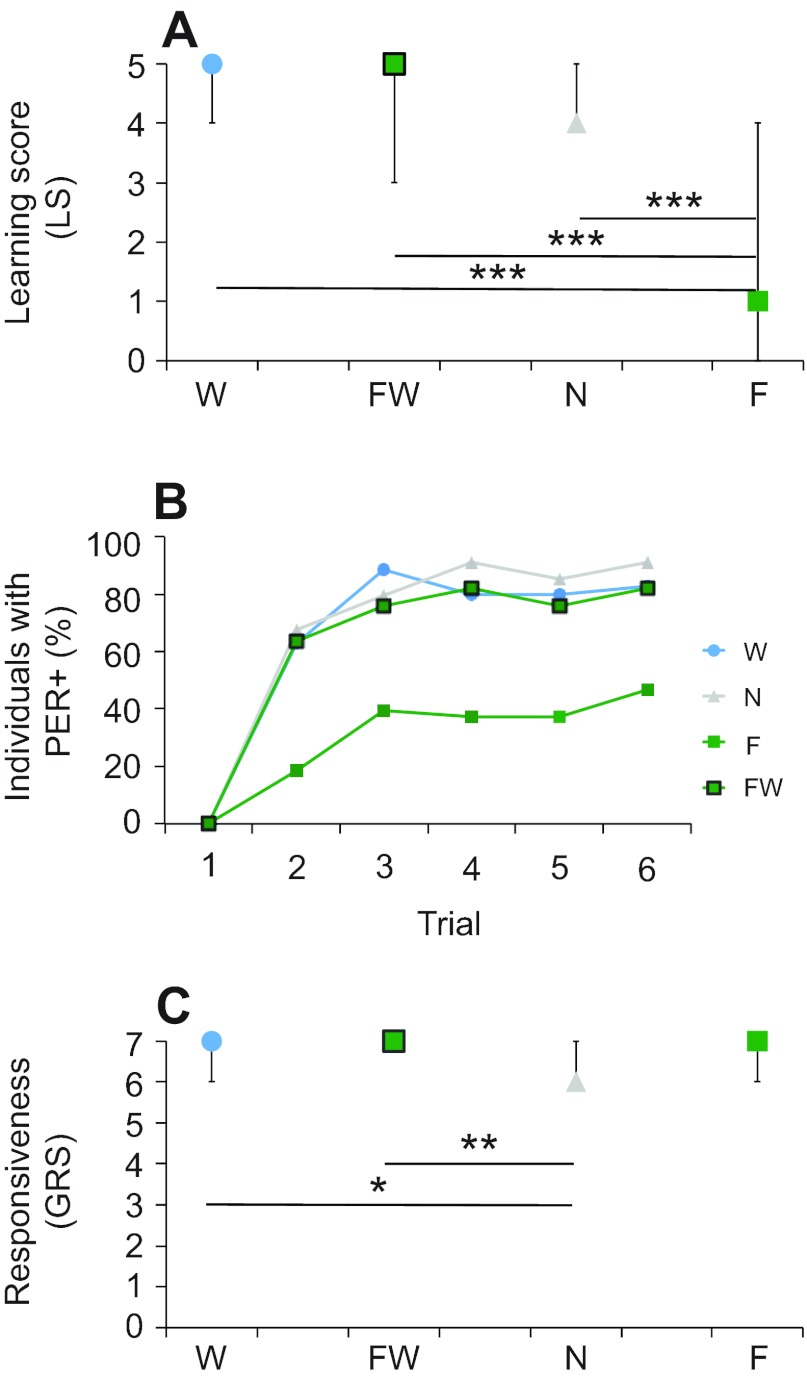Fig. 3.
In spring, behavioral senescence was not detectable in colonies that were prevented from brood rearing. (A,B) After outwintering, two colonies were allowed to establish a brood-rearing pattern that is typical for summer bees (F, foragers; N, young nest bees). In contrast, two post-winter colonies were prevented from brood care by caging the queen and removing all brood rearing, while the former winter bees were separated into old foragers (FW) and old nest bees (W). In foragers, declined learning performance was only detected in colonies with brood (F) as compared with foragers from colonies that were made broodless (FW; P<0.001). Learning curves for all groups are shown in B. (C) A lower gustatory responsiveness was only detected for the young nest bee control (P<0.05). Thus, gustatory responsiveness cannot explain the apparent lack of behavioral senescence in old groups (W, FW) from the broodless colonies compared with foragers from the brood-right colonies (for further statistical details, see Results). In A and C, medians as well as upper and lower quartiles are shown for learning score and gustatory responsiveness.

